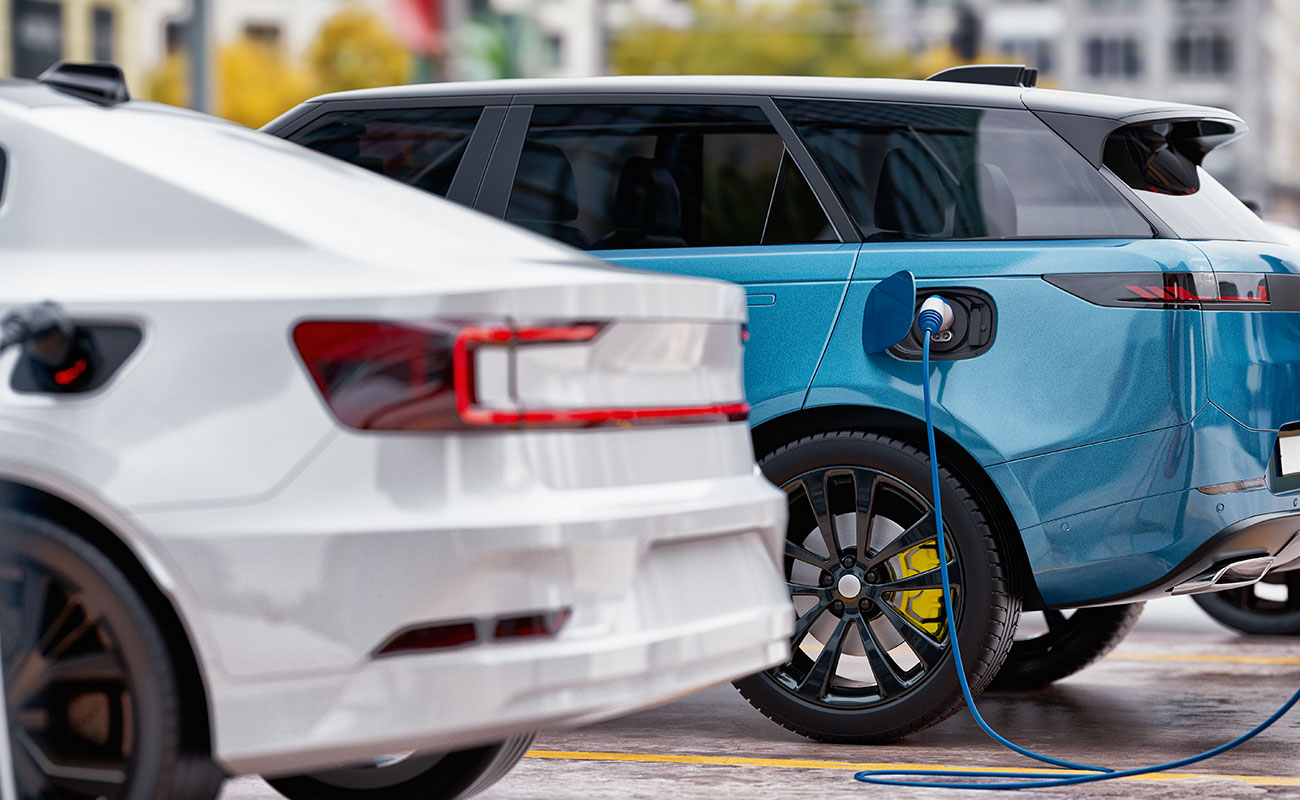How EVs Are Shaping the Future of Urban Commutes
As cities around the world grapple with rising pollution, traffic congestion, and environmental concerns, electric vehicles (EVs) have emerged as a key player in reshaping the future of urban transportation. The shift from traditional internal combustion engine (ICE) vehicles to electric vehicles marks a fundamental change in how we approach mobility. In urban environments, where the concentration of people, businesses, and vehicles is densest, the adoption of EVs is poised to have profound implications on the way we commute, live, and interact with our surroundings.
From reducing carbon emissions to promoting smarter transportation networks, electric vehicles are revolutionizing urban commutes in ways that go beyond simply offering an alternative to gasoline-powered cars. In this article, we’ll explore how EVs are reshaping the future of urban mobility, focusing on the benefits they offer, the challenges they present, and the ways in which they are being integrated into cities worldwide.
1. Reducing Pollution and Improving Air Quality
One of the most compelling reasons for adopting electric vehicles in urban areas is the substantial reduction in pollution. Cities, especially large metropolitan areas, often face severe air quality issues due to high volumes of car traffic. Traditional vehicles powered by gasoline or diesel release harmful pollutants such as nitrogen oxides (NOx), particulate matter (PM), and carbon dioxide (CO2), which contribute to smog, respiratory diseases, and climate change.
EVs, on the other hand, produce zero tailpipe emissions. This means that by replacing conventional vehicles with EVs, cities can dramatically reduce their contribution to air pollution. With urban populations growing and car ownership increasing, the potential impact of widespread EV adoption on air quality is significant. According to a study by the International Council on Clean Transportation (ICCT), if all new cars sold in the United States were electric by 2035, it could reduce CO2 emissions by more than 1 billion metric tons per year.
Moreover, many cities worldwide are already seeing the benefits of cleaner air. For instance, in cities like Oslo, Norway, and Amsterdam, where EV adoption is already high, air quality has improved, and the health benefits are becoming increasingly evident. As more cities embrace EVs, the positive effects on urban health and the environment will continue to grow.
2. Reducing Traffic Congestion
Traffic congestion is a major problem in many urban areas. The combination of a growing population, urban sprawl, and a reliance on personal vehicles has led to clogged roads, long commute times, and increased stress levels. EVs are helping to alleviate some of these issues in a few key ways.
Firstly, many electric vehicles are smaller and more efficient than traditional gas-powered vehicles, allowing for better utilization of road space. Compact EVs can easily maneuver through crowded streets and take up less space when parked, which helps reduce overall congestion.
Secondly, EVs are closely tied to the concept of mobility-as-a-service (MaaS), a growing trend in urban transportation. MaaS refers to the integration of various transportation modes—such as electric scooters, car-sharing, and ride-hailing services—into a single, accessible platform. Many EVs are used in shared fleets, reducing the need for individual car ownership. Car-sharing services, like those offered by companies such as Zipcar and Turo, allow urban residents to access EVs when needed without the burdens of ownership. By promoting shared mobility and reducing the number of privately owned cars on the road, cities can alleviate congestion and reduce the overall number of vehicles.
3. Lowering Urban Noise Pollution
In addition to reducing air pollution, EVs can also help tackle another major issue in urban areas: noise pollution. The noise generated by traditional internal combustion engines contributes significantly to the cacophony of city life, affecting residents’ quality of life and leading to stress, sleep disturbances, and even hearing loss in extreme cases.
Electric vehicles, in contrast, are much quieter, especially at lower speeds. This creates a more peaceful urban environment, which is particularly important in dense city centers where noise levels are often at their highest. A quieter city can improve the well-being of residents and contribute to a more pleasant urban experience. While at higher speeds, some EVs may still generate noise due to tire friction and wind resistance, the reduction in engine noise is a significant improvement.
In many cities, the adoption of quieter EVs could also result in changes to urban planning. With less noise pollution from vehicles, cities may prioritize pedestrian-friendly spaces, outdoor cafes, and green zones in areas previously dominated by car noise.
4. Infrastructure Development and Smart Cities
For EVs to truly transform urban commuting, the necessary infrastructure must be in place. This includes public charging stations, smart grids, and integrated transportation systems. Cities worldwide are beginning to invest in building out this infrastructure to accommodate the growing number of electric vehicles.
The installation of public charging stations is critical for EV adoption. Cities are increasingly deploying these stations in strategic locations such as parking lots, shopping centers, office buildings, and even on residential streets. In some cities, governments are incentivizing businesses to install charging stations to ensure that drivers have easy access to charging points wherever they go.
EVs are also being integrated into smart city initiatives. A smart city is one that uses digital technologies to enhance performance, well-being, and reduce costs and resource consumption. In the context of EVs, this means leveraging data and connectivity to optimize the way vehicles interact with the infrastructure. For example, EVs can be connected to the grid, allowing for smart charging, where charging times are optimized based on electricity demand and supply. This not only helps reduce the strain on the electrical grid but also makes EVs more energy-efficient.
Moreover, the integration of EVs with autonomous vehicles (AVs) and ride-sharing platforms could further reshape urban commuting. AVs equipped with electric drivetrains can offer a more efficient and sustainable way to move people around, reducing the need for personal vehicle ownership and optimizing traffic flow. By combining the benefits of EVs with autonomous technology, cities could create a more flexible, efficient, and sustainable transportation network.
5. Affordability and Accessibility
Historically, electric vehicles have been viewed as a premium option, with prices higher than those of traditional gasoline-powered cars. However, the landscape is changing. As battery technology improves and economies of scale kick in, the price of EVs is steadily decreasing, making them more affordable and accessible to a larger portion of the population.
In addition, government incentives and subsidies are playing a critical role in driving down the cost of EVs. Many countries and cities are offering tax credits, rebates, and other financial incentives to encourage the purchase of electric vehicles. These programs make EVs more attractive to urban residents who might otherwise be hesitant due to cost concerns.
The growing availability of affordable EVs also contributes to the democratization of sustainable transportation. As more people adopt electric vehicles, the positive impacts on the environment and urban mobility will be felt across a broader demographic.
6. Overcoming Challenges
While EVs offer many advantages, there are still several challenges that need to be addressed before they can fully reshape urban commutes. The first and perhaps most pressing issue is the availability of charging infrastructure. Although the number of charging stations is growing, it is still insufficient in many urban areas, particularly in older neighborhoods with limited access to private parking spaces. Governments and private companies need to accelerate the installation of charging stations and create solutions for apartment dwellers who may not have easy access to charging.
Another challenge is battery range. While EVs have made significant progress in terms of range, many models are still limited in how far they can travel on a single charge. This can be a concern for urban residents who need to drive long distances or travel outside city limits. However, as battery technology continues to improve, these concerns are expected to lessen.
Finally, the transition to electric vehicles must be accompanied by broader changes in energy infrastructure. Cities need to ensure that the power grid can handle the increased demand for electricity as more people switch to EVs. Additionally, to maximize the environmental benefits of EVs, the energy used to charge them must come from clean, renewable sources.
Conclusion
Electric vehicles are reshaping the future of urban commutes in profound ways. From reducing air pollution and noise to promoting more sustainable, shared mobility options, EVs are helping to create smarter, cleaner, and more efficient cities. While challenges remain, the continued development of EV technology, infrastructure, and policies will further solidify their role in shaping the future of urban mobility.
As more people adopt EVs, we can expect to see further innovations in urban planning and transportation systems, making cities more livable, sustainable, and interconnected. The rise of electric vehicles is not just about cleaner cars—it’s about transforming the very way we think about and experience urban life.



